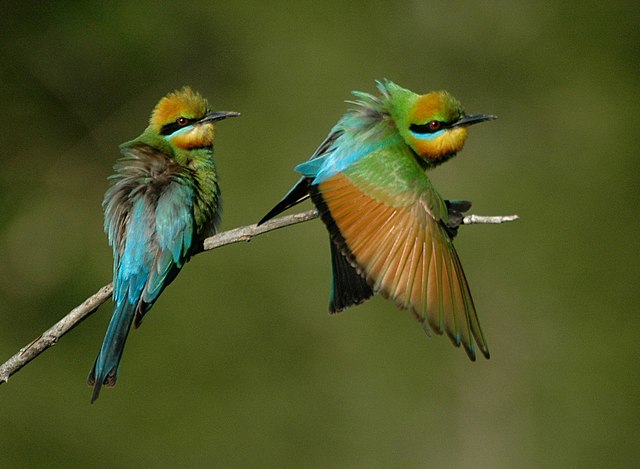The European bee-eater is a near passerine bird in the bee-eater family, Meropidae. It breeds in southern and central Europe, northern and southern Africa, and western Asia. Except for the resident southern African population, the species is strongly migratory, wintering in tropical Africa. This species occurs as a spring overshoot north of its usual range, with occasional breeding in northern Europe.
European bee-eater
Eggs of Merops apiaster
Feeding bee-eater—the female (in front) waits for the male's offering
Each with a dragonfly
The bee-eaters are a group of birds in the family Meropidae, containing three genera and thirty species. Most species are found in Africa and Asia, with a few in southern Europe, Australia, and New Guinea. They are characterised by richly coloured plumage, slender bodies, and usually elongated central tail feathers. All have long down-turned bills and medium to long wings, which may be pointed or round. Male and female plumages are usually similar.
Bee-eater
Rainbow bee-eaters, a Merops species
Merops species such as the white-fronted bee-eater usually have a black bar through the eye.
The blue-bearded bee-eater is associated with forests, where it forages in edge habitats








